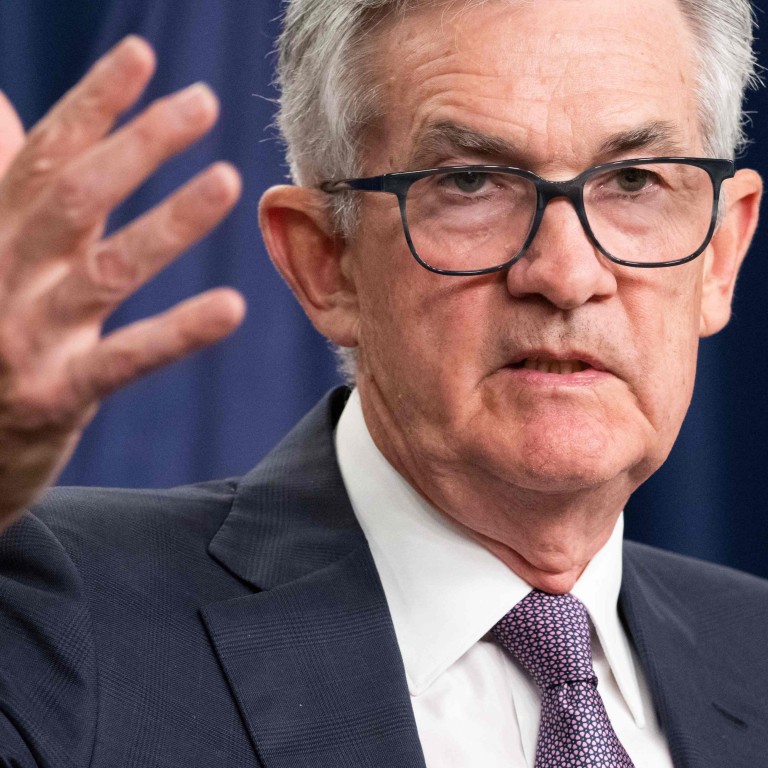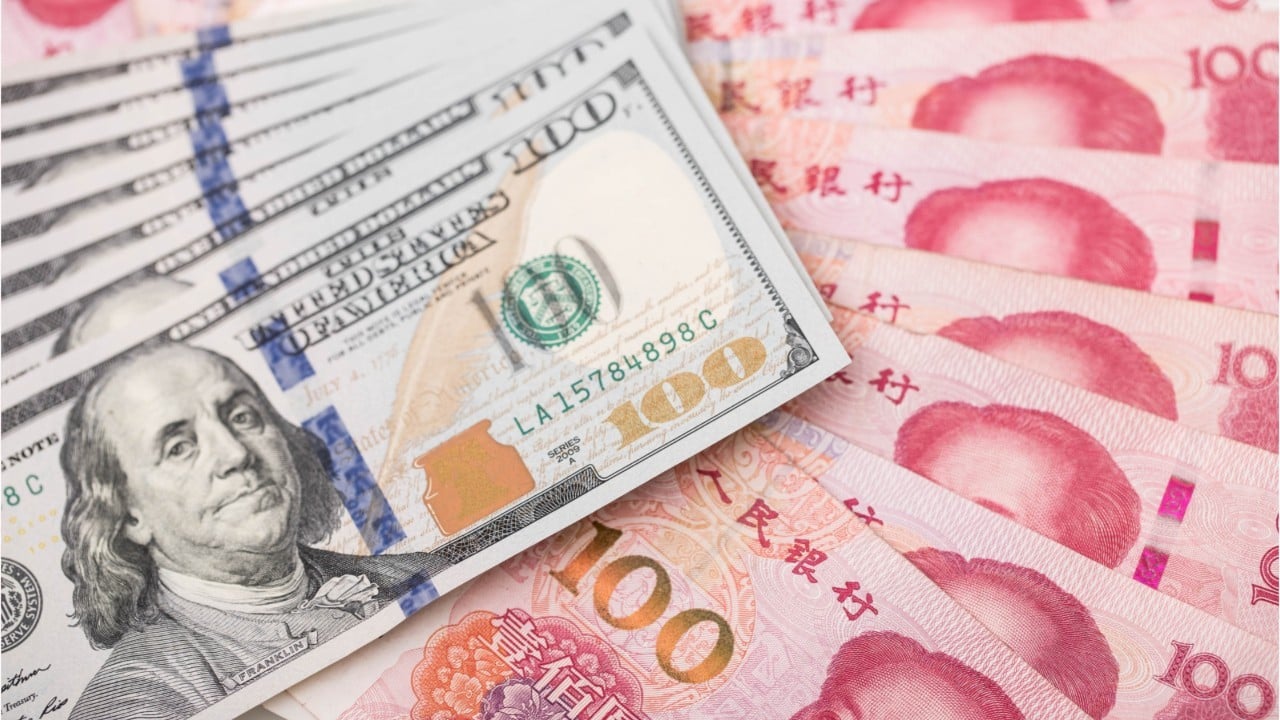
China’s capital conundrum: US Fed hikes and geopolitical strife add fuel to yuan exodus
- After another interest-rate hike by the US Fed, and with more to come, China’s central bank is looking to prevent a rapid depreciation of the yuan
- Some analysts are calling for Beijing to maintain flexibility in the yuan’s exchange rate, even after it recently crossed a key psychological line of 7.0 yuan to the US dollar
A steady stream of capital outflow from China poses a growing challenge to Beijing and emerging economies that are already struggling to cope with faltering economic growth and a rapid strengthening of the US dollar, according to analysts.
And with a fourth rate hike possible in November, the pressure on Beijing looks to keep mounting as it strives to prevent both excessive yuan depreciation and a massive exodus of capital.
Capital outflow risk grows as China’s yuan slides against US dollar
In total, emerging markets in August posted their first month of inflows – totalling US$27 billion – after five consecutive months of outflows, according to the IIF. In July, net portfolio outflows from emerging markets reached US$9.8 billion.
But the scale of China’s capital outflow is not yet comparable with the exodus recorded in 2015, when the PBOC shocked markets by devaluing the yuan by more than 3 per cent. The IIF estimated that China saw a net capital outflow of US$676 billion in 2015.
The yuan, which has been depreciating against the US dollar of late, reached 7.0853 per dollar in Thursday’s early trade in the onshore market – the weakest level since June 29, 2020 – and closed the day at 7.0810 against the greenback, compared with the previous close of 7.0496.
In a note on Thursday, analysts with Commerzbank warned of “the potential negative impact on the yuan” from the US dollar’s strength and the Fed’s policy moves.
“This is even more pertinent given the Fed’s latest projection for more hikes this year,” they said, adding that they expect the PBOC to tread lightly with its rate decisions until the US rate-hike cycle peaks.
China’s central bank refrained from lowering benchmark lending rates in a monthly fixing on Tuesday. It also said that interest rates were “reasonable”, and that the country still has room to ease its monetary policy to drive economic growth.
But sluggish demand will contribute to deteriorating trade balances, exacerbating the risk to emerging-market currencies arising from the stronger dollar, according to a note this week from London-based research firm TS Lombard.
China cuts banks’ forex reserve ratio as yuan hits 2-year low against US dollar
Emerging markets such as Malaysia have already begun to feel the heat from tighter global financial conditions and greater exchange-rate volatility, as it sees foreign investors selling off its debt and stocks.
Central Bank Negara Malaysia’s foreign reserves reversed course and declined by US$1 billion in August to US$108.2 billion – the lowest level since December 2020, data from United Overseas Bank (UOB) shows.
“With US dollar strength and yuan weakness expected to continue, we think that the Malaysia Ringgit will still be on the defensive against the US dollar, hitting 4.58 by year-end and 4.60 by mid-2023,” UOB Group said in a note earlier this month.
So far this year, the US dollar has strengthened by 10.9 per cent against the yuan, 13.7 per cent against the euro, 17.4 per cent against the Korean won, and 24.9 per cent against the Japanese yen.
“The main objective of the weakening of the yuan against the US dollar is perhaps to steady the yuan against the basket of trade-weighted currencies,” said Zhang Ming, deputy director with the Institute of Finance & Banking at the Chinese Academy of Social Sciences.
Despite its weakness against the US dollar, the yuan still remains steady compared with the other currencies of its major trading partners.
“From the perspective of expanding external demand and maintaining a certain level of growth in foreign trade, it is necessary to depreciate the yuan moderately at present,” Wang Yongli, a former vice-president with the Bank of China, said last week, adding that China should take “necessary” steps to prevent “excessive” depreciation of the yuan.
Aside from the Fed’s aggressive rate-hike plans, China’s persistent capital outflow, with foreign investors cutting their holdings of Chinese government bonds, is also being driven by heightened geopolitical tensions, including from Russia’s invasion of Ukraine.
There are gains and losses in the yuan’s weakening, but that does not warrant excessive concern
In 2015, to curb the exodus, the PBOC imposed harsh capital controls, squeezing interest rates and burning through nearly US$320 billion worth of its foreign currency reserves to quell market panic and reduce the risk of a stampede away from the yuan.
“All we can do is maintain the utmost flexibility in the yuan and continue to manage cross-border capital flows. There are gains and losses in the yuan’s weakening, but that does not warrant excessive concern,” Yu Yongdong, an outspoken economist in China and former adviser to the PBOC, said in a blog post on Tuesday. “China’s capital flight may be relatively serious, but the severity is difficult to judge.
“To fundamentally solve the problem of capital flight, China must deepen institutional reforms. But … the management of cross-border capital cannot be abandoned.
“The Fed’s rate hikes have put pressure on China’s macroeconomic policies but, fundamentally, the challenges are coming from inside [China].”
The value of China’s foreign-exchange reserves has gradually reduced, but it remains steady above US$3 trillion – the world’s largest total. The reserves stood at US$3.05 trillion at the end of August, according to China’s exchange regulator, the State Administration of Foreign Exchange (SAFE).
In surprise move, China cuts key interest rate by 10 basis points
A decade-long yield advantage on China’s government bonds over US government bonds vanished in April. Yields on US government bonds are now higher than those of China’s, making US bonds more attractive to investors. And some say the PBOC could be taking notice.
Jin Yi, head of Sealand Securities’ fixed-income team, said the average interest rate spread between Chinese and US government bonds was around 14 basis points in the second quarter of 2022, which corresponded with a decrease of US$19 billion in China’s foreign-exchange-reserve assets over the same period, according to SAFE data.
However, the US dollar deposits held by exporters and corporations in China’s onshore banking system total about US$1 trillion, and this could limit the upside for the US dollar versus the yuan, according to a note last week by Western Asset Management, adding that Beijing may press on with strict border controls that prevent Chinese money and high-net-worth citizens from leaving the mainland.
“We tend to believe that the capital-outflow pressure corresponding with the current inversion of the interest-rate differential between China and the United States may have attracted the attention of the central bank,” Jin said.


